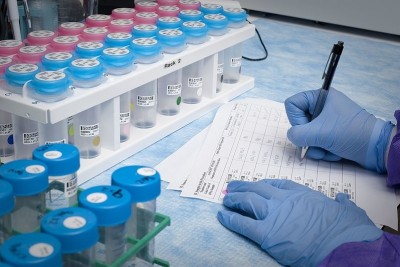Austria as an International Leader in Research and Development Expenditures
Austria is one of the top performers in Europe in terms of expenditure on research and development. With a value of over 3% of GDP, Austria is thus one of the few countries to reach the EU's specified quota. Austria is also very successful in other areas on average in the EU. Read more in the following article!
 Austria is one of Europe's top nations in terms of spending on research and development. / Picture: © Wikimedia Commons / National Eye Institute, CC BY 2.0 (https://creativecommons.org/licenses/by/2.0)
Austria is one of Europe's top nations in terms of spending on research and development. / Picture: © Wikimedia Commons / National Eye Institute, CC BY 2.0 (https://creativecommons.org/licenses/by/2.0)
Austria is one of Europe's top nations in terms of spending on research and development. Together with Sweden, Belgium, Germany and Denmark, it is one of the five countries in the EU that meet the European target of a research quota of 3%.
This and other interesting information can be found in the Research and Technology Report 2022 (FT Report), which was jointly presented by Science Minister Martin Polaschek, Climate Protection Minister Leonore Gewessler and Economy Minister Martin Kocher.
The report points out that the research areas of artificial intelligence, quantum research and high performance computing (HPC) as well as the topics of circular economy and sustainability are of particular importance for the future and that highly qualified human capital is a basic prerequisite for excellent performance.
The current FT report provides for the first time an overall view of the funding and instrument portfolio accessible in Austria for researchers as well as for scientists at all stages of their careers.
R&D expenditure to rise significantly again in 2022
According to the global estimate of Statistics Austria, R&D expenditures in Austria will amount to about €14.15 billion in 2022, 9.3% higher than in 2021. The research ratio, i.e. the share of gross domestic expenditure on R&D measured against gross domestic product, is expected to be 3.26% in 2022.
This will be the ninth time in a row that Austria has managed to exceed the European target of 3%.
R&D survey 2019: research expenditures rise more strongly than GDP
According to Statistics Austria's R&D Survey 2019, a total of €12.4 billion was invested in R&D in 2019. Compared to 2017, R&D expenditure thus increased by €1.151 billion or 10.2%. This increase significantly exceeds the nominal GDP growth of 7.6% in the same period. At 70.3%, the business enterprise sector accounts for the largest share of R&D expenditure, while the higher education sector has the second largest share at 21.8%.
Government research institutions account for 7.3% and the private non-profit sector for 0.5%.
Austria's innovation system in international comparison
With an R&D ratio of over 3%, Austria is at the top of the EU states, and in terms of research and development performance, measured by key quality-oriented parameters such as international patent applications or the citation rate, it is in the good upper midfield. Austria performs particularly well in terms of the number of ERC grants per 1 million inhabitants in Horizon 2020 (second place behind the Netherlands).
From the perspective of global innovation rankings, Austria also occupies places in the front midfield (18th place in the Global Innovation Index and thus an improvement of one place compared to the previous year, 8th place in the European Innovation Scoreboard).
Austria has thus not succeeded in joining the field of innovation leaders in the overall ranking, but it has been in a leading position in the group of Strong Innovators for some time.
In the area of digitalisation, the European Commission's Digital Economy and Society Index (DESI) for 2021 shows that Austria is now quite clearly above the European average. Compared to 2020, according to the report, Austria shows improvements especially in the areas of "connectivity" and "integration of digital technologies", where previously below-average scores were achieved.
For the first time, the report also refers to other indices in which Austria is above the EU average, such as the ability to apply future technologies (Readiness for Frontier Technologies Index 2021) or the use of the "Internet of Things" in the population (2020).
Austria also performs very well in terms of relevant indicators, such as the share of scientific publications or patents, and positions itself well above the EU average. Taking into account other indicators of innovative capacity, such as knowledge, human capital, economic complexity and resilience, Austria records values above the EU-27 average almost across the board.
Austria is slightly below the EU average in terms of AI use by companies, tertiary degrees and geopolitical resilience (capacities). Austria scores above average in R&D indicators, in AI research and quantum research, and in social, economic and green resilience.



